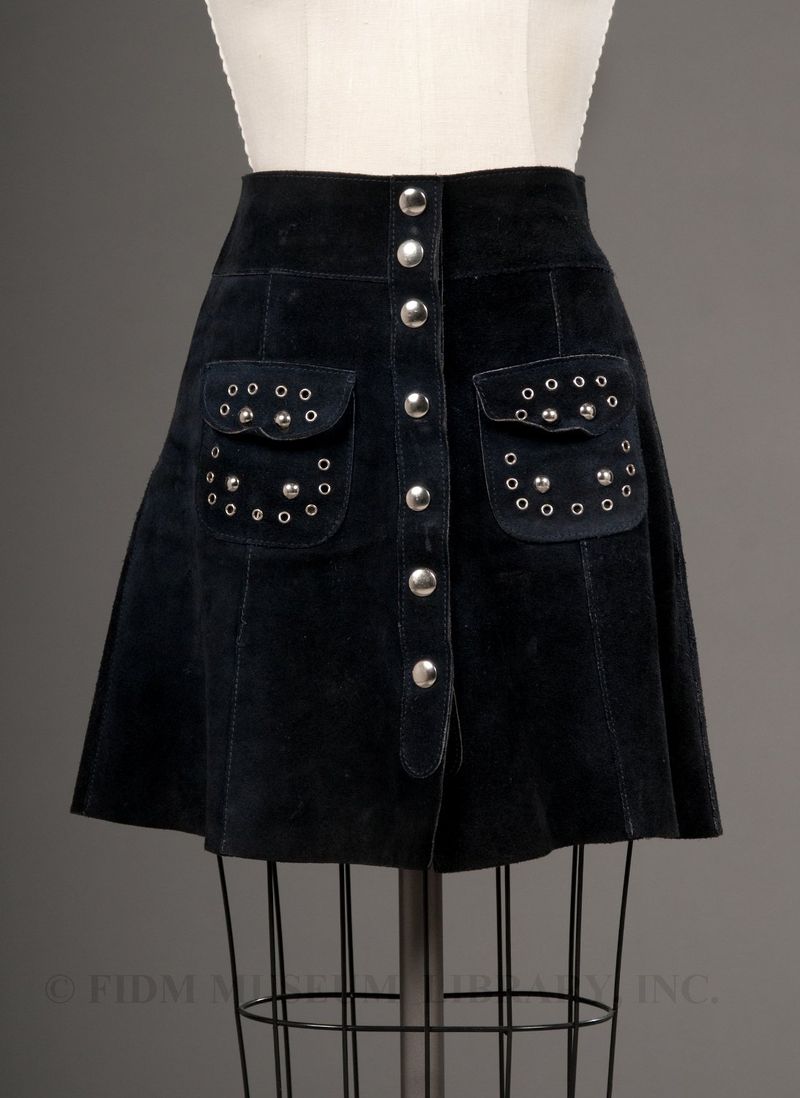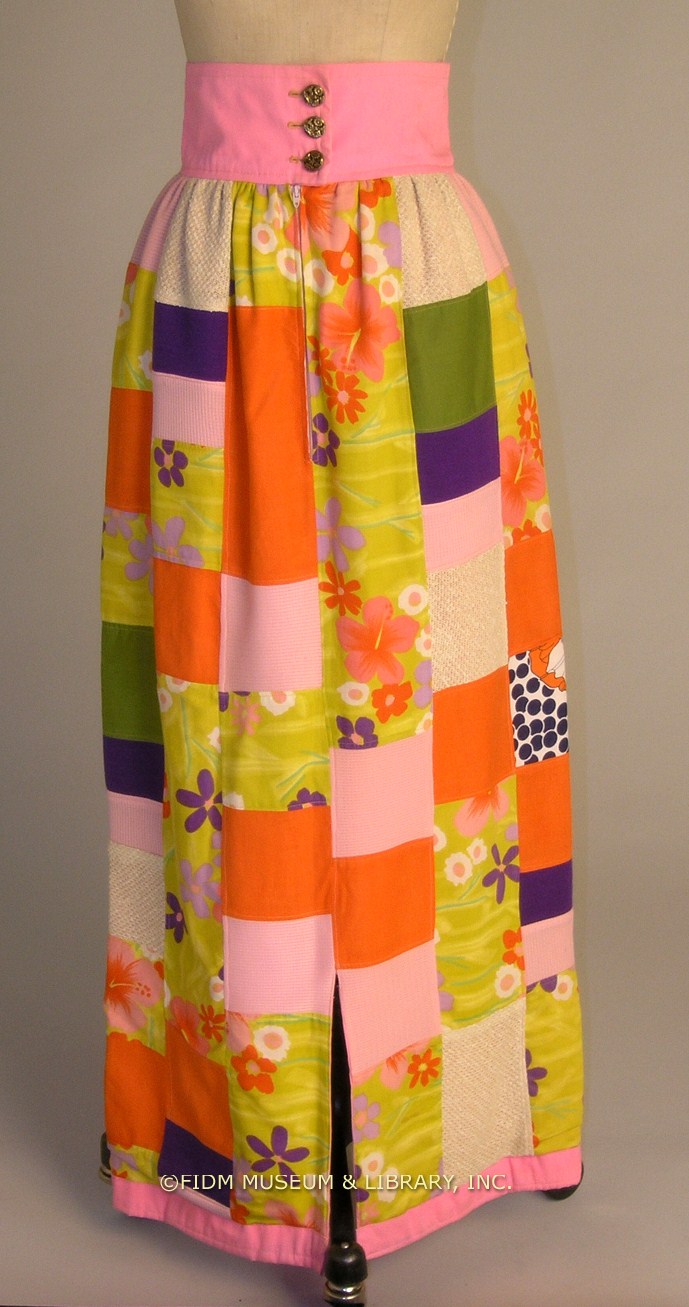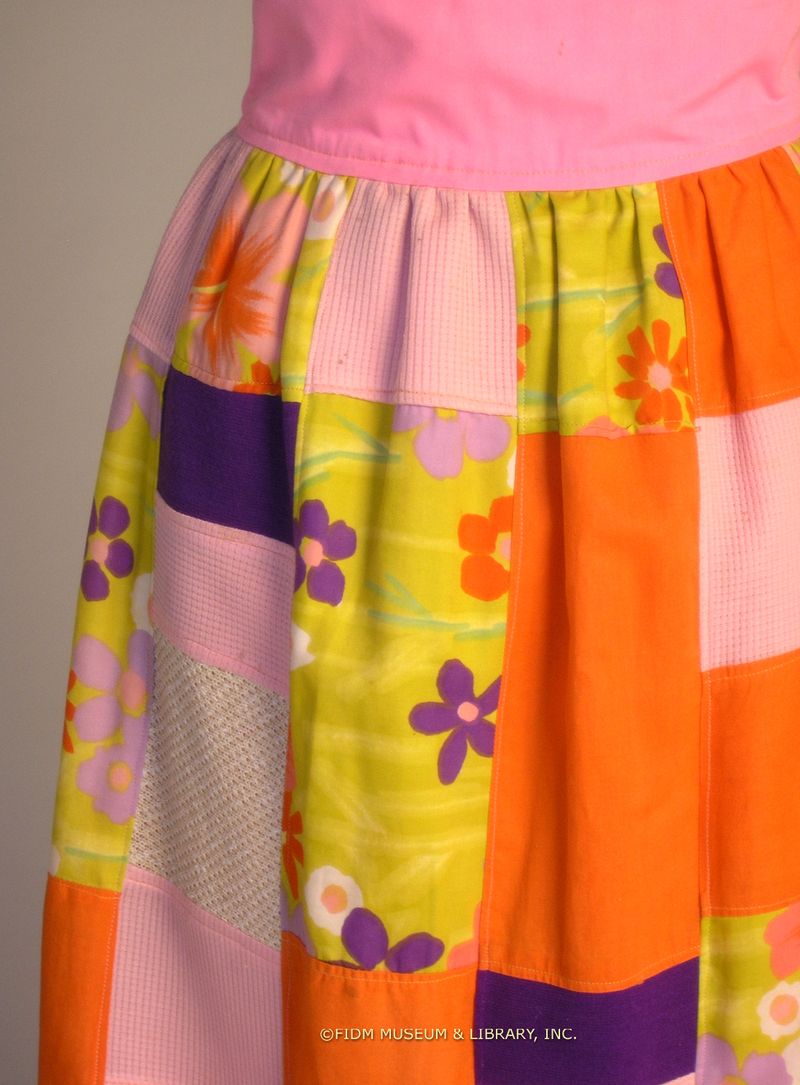From mini to maxi
As discussed in this post, fashions changed dramatically in the 1960s. For women, the miniskirt was emblematic of widespread social and cultural changes which occurred throughout the decade. British designer Mary Quant is usually credited with bringing the mini to the forefront of fashion. Working from her London boutique Bazaar, Quant both sourced and produced simple, unstructured garments with a youthful edge. By 1960, Quant had introduced above-the-knee skirts. Other designers, most notably Rudi Gernreich and Andre Courreges, picked up on the popularity of this radical new style and the miniskirt was widely popular by 1965. Though usually worn with opaque tights, the mini exposed a tremendous amount of leg and was considered overtly sexual. This was particularly shocking to those accustomed to the all encompassing full skirts and dresses of the 1950s. Because it did not require a rigid corset, the mini was also considered liberating and more comfortable. Young women were the first to adopt this new length, but it was soon worn by women of varied ages. Of course, the mini was available in a variety of lengths, from the tiny "micro mini" to the more modest knee-length version. Miniskirts also came in a variety of fabrications, from office-appropriate wool to the edgier suede version seen below. 
Miniskirt c. 1968 Gift of Joanee Honour 2003.156.2 By 1968, rumblings in the fashion press predicted the death of the mini. Designers had begun to introduce slightly longer skirt lengths, such as the midi (calf-length) and even the floor length maxi skirt. In June of 1968, the trade publication Women's Wear Daily went so far as to ban miniskirts in the office or while on reporting duty. Women outside the fashion industry, however, were reluctant to abandon their minis. One group of New York women drafted and sent a petition to a number of fashion reporters and department store presidents to register their discontent at the possibility of the mini going out of fashion. Calling themselves "mini militants," these women made protest signs reading "Maxis are Monstrous."
Maxi skirt 1970 Gift of Lynn Rosenstein S2003.34.1 Inevitably, the march of fashion continued and the mini lost its position of fashion prominence. Fashion advertisements from 1968 focus primarily on the midi and maxi length, though wide-legged pants were also suggested as a fashionable option. The variety of available skirt options led to what was called the "mixi" aesthetic. Maxi skirts often featured knee or thigh-high slits, as if this peek-a-boo exposure could split the difference between the mini and maxi length. It was also acknowledged that this rapid and dramatic change in fashion could be prohibitively expensive for the average woman. Perhaps in response to this sentiment, savvy marketers began offering mail order patchwork kits with patterns included. The kits included pre-cut fabric squares and patterns for mini, midi or maxi skirts, among others. Marketed both to those interested in the hodge-podge hippie aesthetic and to women interested in bucking fashion trends, the advertisements appeared in metropolitan newspapers throughout the country. The finished patchwork skirts would have looked very similar to the FIDM Museum maxi-skirt pictured here.

